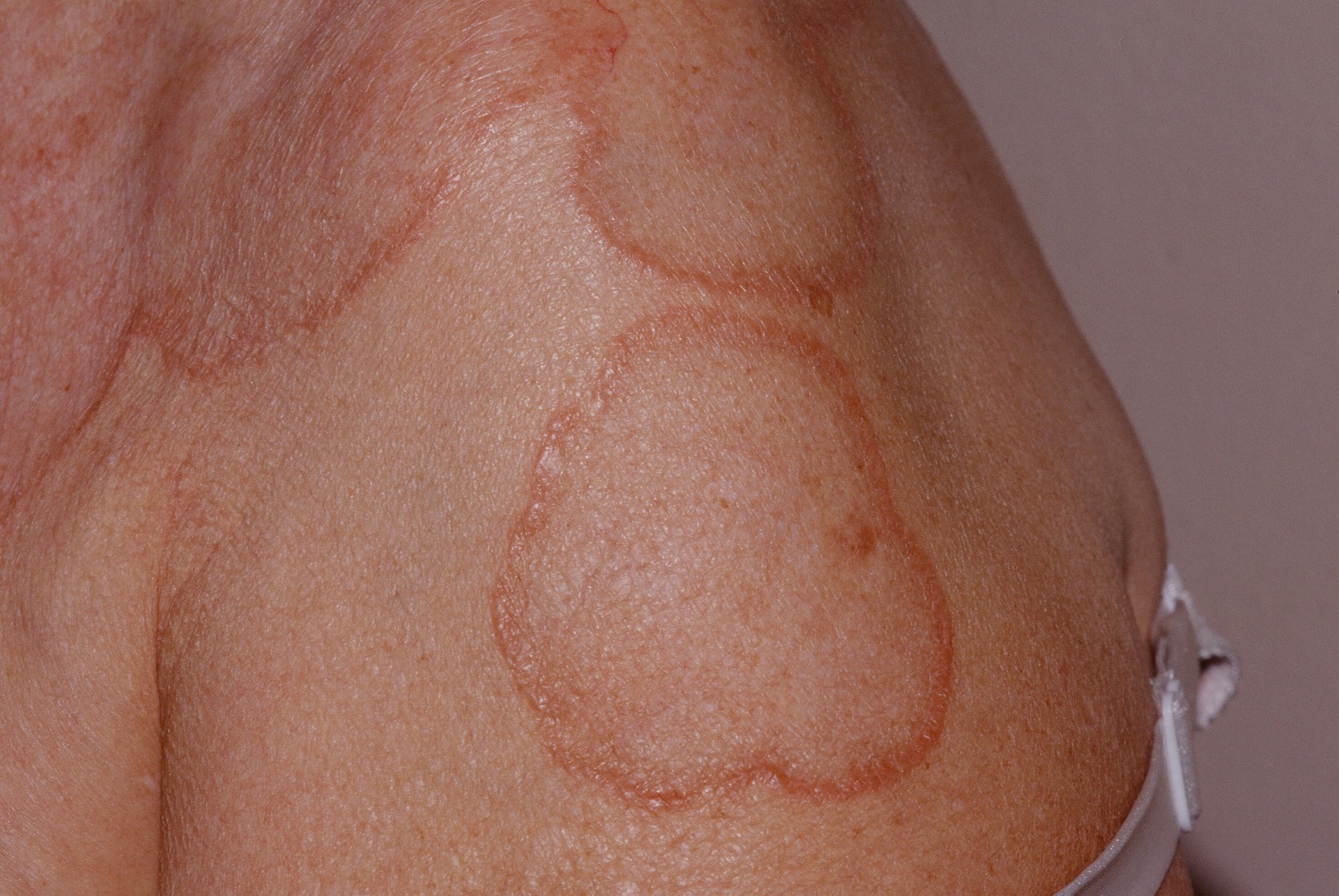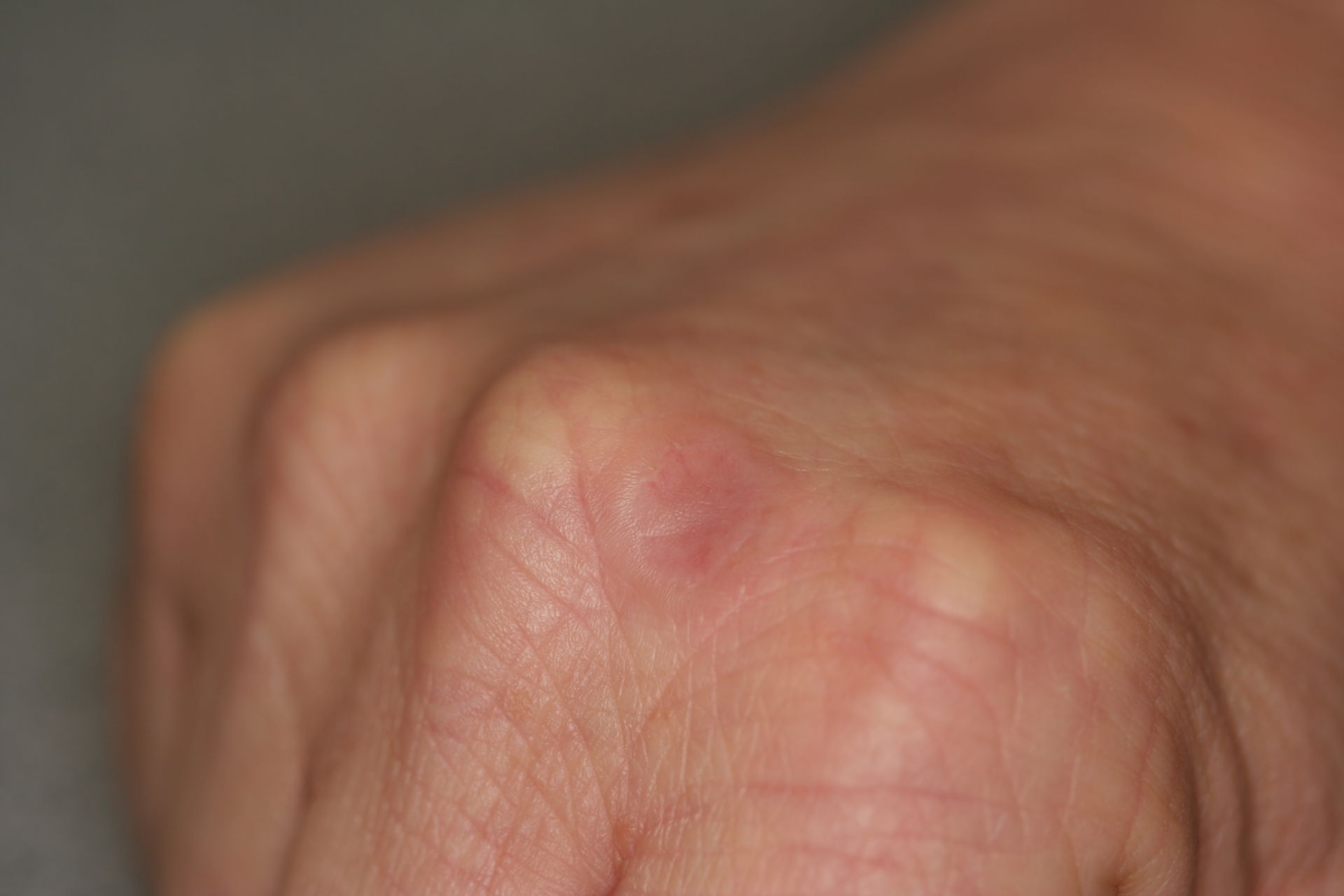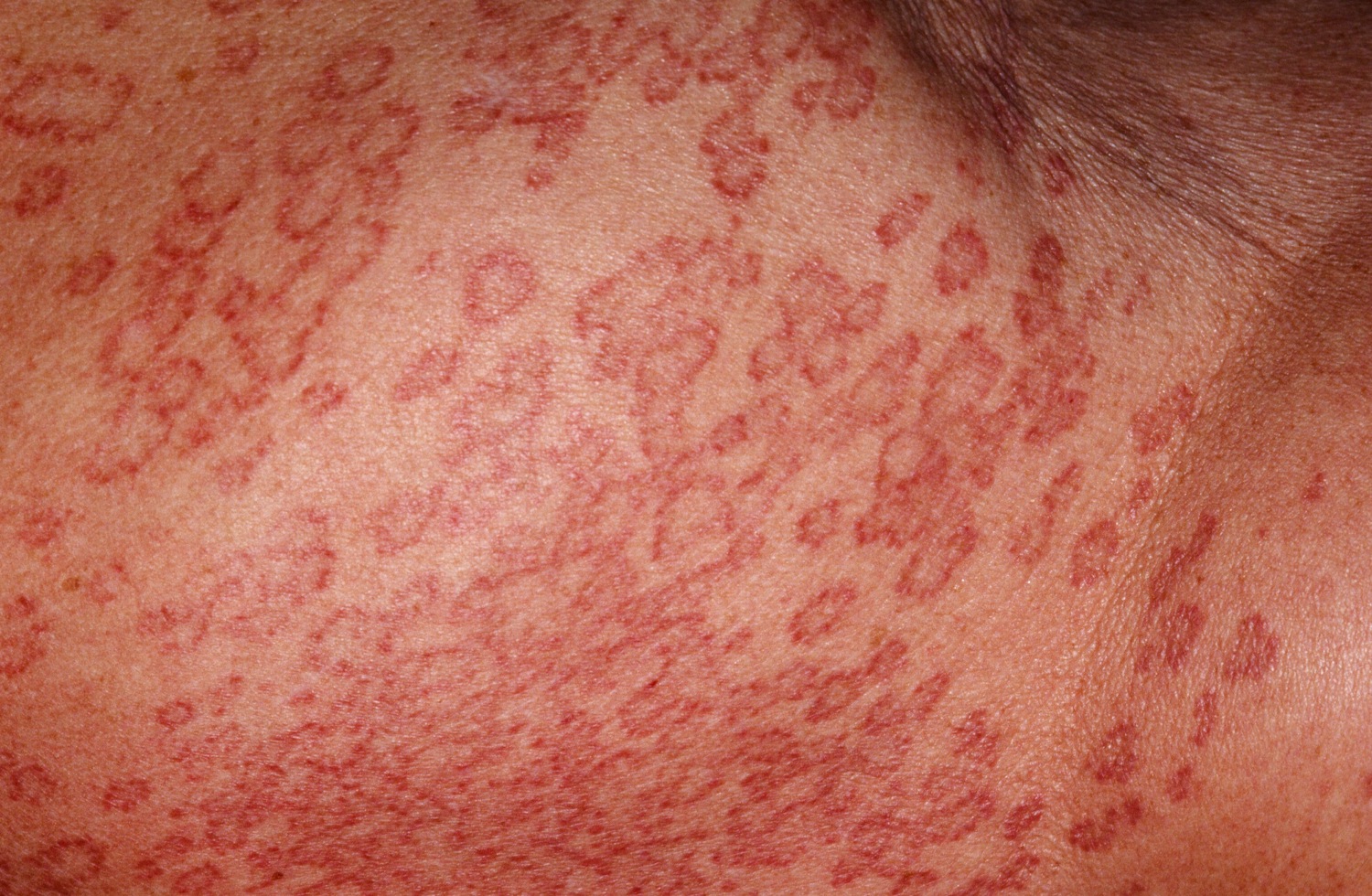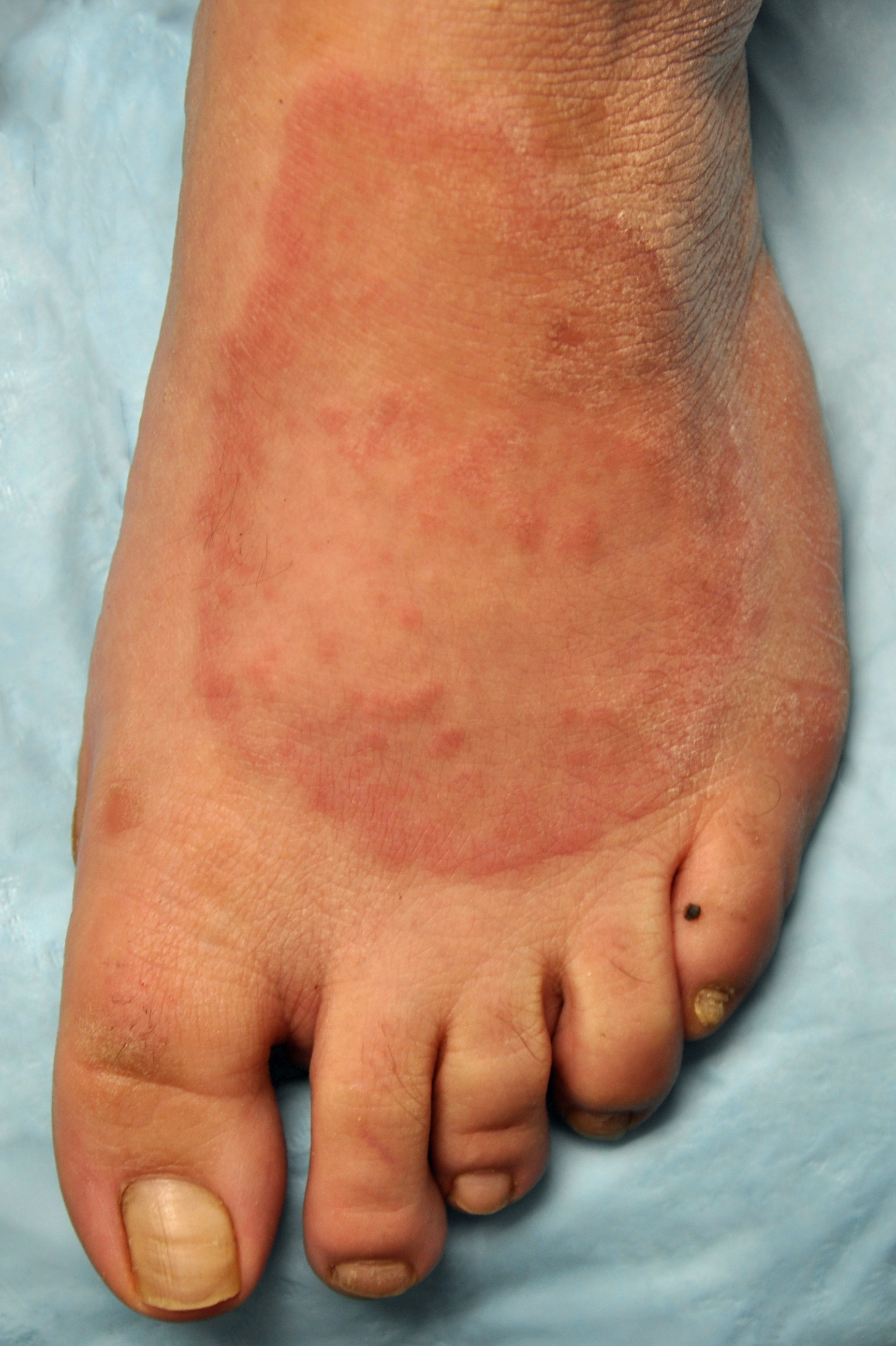
Granuloma anulare störend, aber harmlos SpringerLink
People often develop granuloma annulare after they: Injure their skin. Take certain medications. Develop another disease. It may be that granuloma annulare is a reaction that occurs in the skin. It may require a trigger, such as injuring your skin. Granuloma annulare often appears after people injure their skin.

Granuloma Annulare Causes, Rash, Treatment
Granuloma annulare mainly affects children, teenagers and young adults, but older adults can get it too. The most common symptom is small circular patches of pink, purple or skin-coloured bumps on the skin. The patches can appear on 1 or more places on your body. They tend to affect bony areas such as the back of the hands, fingers, elbows and.

Granuloma Annulare Causes, Rash, Treatment
Annular elastolytic giant cell granuloma (actinic granuloma): May be variant of granuloma annulare (Am J Dermatopathol 1979;1:43) Mucin often absent (Cutis 1998;62:181) Elastophagocytosis may be seen in both granuloma annulare and annular elastolytic giant cell granuloma (J Am Acad Dermatol 1986;14:975) Central atrophy can occasionally be noted

[Figure, Granuloma Annulare. Source StatPearls NCBI Bookshelf
Das Granuloma anulare kann sich aufgrund einer Immunreaktion bilden. Bei den Betroffenen können ein Ring oder mehrere Ringe in verschiedenen Verfärbungen auftreten. Die Diagnose stützt sich in der Regel auf das charakteristische Aussehen der Haut und kann mit einer Hautbiopsie bestätigt werden. Meist heilt das Granuloma anulare ohne.
:max_bytes(150000):strip_icc()/2697-2ebef4350eaf4d62a8cbb74fedcc3c07.jpg)
Granuloma Symptoms and Related Conditions
Subcutaneous granuloma annulare is diagnosed primarily in children two to five years of age. The lesions are asymptomatic, rapidly growing subcutaneous nodules on the extremities, hands, scalp.

Granuloma Annulare Causes, Symptoms, Treatment, Pictures, Diagnosis HealthMD
Definition. Granuloma annulare (GA) is an uncommon benign condition of unknown etiology. [1] Lesions are typically described as dermal papules, which coalesce to form rings, and may be skin-colored, pink, or violaceous; commonly found on the back of hands, ankles, knees, and elbows. [Figure caption and citation for the preceding image starts.

Granuloma annulare DocCheck
Die Ursache dafür könnte die Hautkrankheit Granuloma anulare sein. In diesem Fachartikel erfahren Sie Wissenswertes über Ursachen, Symptome und Behandlungsmethoden dieser an sich harmlosen Hauterkrankung. Über unsere Startseite können Sie sich überdies individuell von Hautfachärzten aus Heidelberg diagnostizieren und beraten lassen.

Granuloma Annulare Causes, Rash, Treatment
Ein Granuloma anulare ist eine gutartige Hautveränderung, die sich typischerweise in meist ringförmig angeordneten Papeln zeigt. Papeln sind kleine Hautverdickungen, die sich leicht über die Hautoberfläche erheben. Mit der Zeit wächst dieser Ring von Papeln oft im Durchmesser. Die Papeln sind hautfarben bis leicht rötlich.

Granuloma Annulare Advanced Skin and Laser Center
Introduction. The first report of granuloma annulare (GA) is credited to Colcott-Fox, who in 1895 described a 'ringed eruption of the fingers' in an 11-year-old girl [].The term 'granuloma annulare' itself was introduced later in 1902 by Radcliffe-Crocker [].GA is a condition that remains poorly understood and past attempts to review GA have conceded that the etiopathogenesis eludes.

granuloma annulare and cancer drugs that cause granuloma annulare Succesuser
Granuloma annulare is a harmless skin reaction that causes small, firm, raised bumps on the skin. The bumps form a ring with normal or slightly sunken skin at the center of the ring. Granuloma annulare is more common in women. You may have a single ring or several rings. Granuloma annulare usually heals without treatment.

Granuloma (Infections) Apex Dermatology & Skin Surgery
Granuloma annulare (GA) has been reported as associated with multiple diseases, mainly diabetes mellitus (DM), thyroid diseases, and dyslipidemia. However, the high prevalence of some of these illnesses makes it difficult to assess whether the association is real or fortuitous.

Granuloma Annulare Dermatology nurse, Granuloma annulare, Dermatology
Granuloma annulare (gran-u-LOW-muh an-u-LAR-e) is a skin condition that causes a raised rash or bumps in a ring pattern. The most common type affects young adults, usually on the hands and feet. Minor skin injuries and some medicines might trigger the condition. It's not contagious and usually not painful, but it can make you feel self-conscious.

Hyperlipidemia and Skin Disease GK Dermatology, PC
Introduction. The term "granuloma annulare" (GA) was coined by H. Radcliffe-Crocker in 1902 [], as a composite of the typical histological findings and the annular (ring-shaped) clinical appearance.GA is a non-infectious, granulomatous disease characterized by papules or nodules ranging from skin-colored to erythematous in color and appearing in the typical annular shape.

Granuloma Annulare Appalachian Spring Dermatology
1. Introduction. Granuloma annulare (GA) is a benign inflammatory dermatosis of unknown etiology. It is common in children and adults, with an estimated incidence of 0.04% in the United States [].Several subtypes of GA exist, including the localized, generalized, subcutaneous, perforating, and patch variants, each with distinct clinical features [].

Granuloma anulare • LOHASCRIVA
Granuloma annulare is a benign skin condition characterized by small, raised bumps that form a ring with a normal or sunken center. The cause of granuloma annulare is unknown and it is found in patients of all ages. The condition tends to be seen in otherwise healthy people. Sometimes it is associated with diabetes or thyroid disease.

Granuloma Annulare Causes, Symptoms, Treatment, Pictures, Diagnosis HealthMD
This section has been translated automatically. In the classic and most common granuloma anulare, there is a solitary, or a few, circular or annular, completely asymptomatic ring structures that may reach 1.0 to 3.0 cm in diameter. These rings are composed of smaller, aggregated, firm, surface-smooth nodules and plaques.